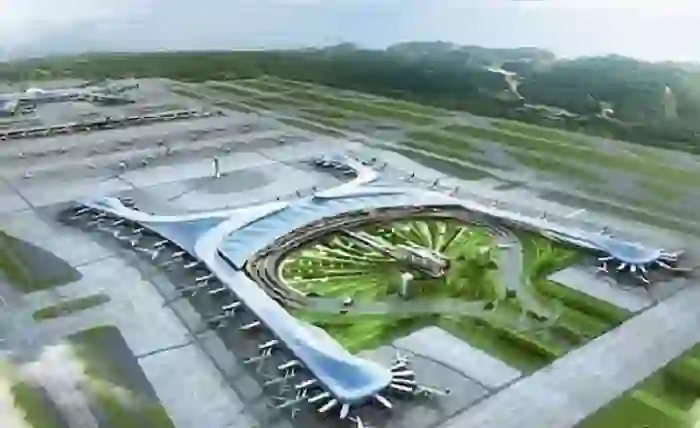Jewar Airport: A New Gateway to Delhi and Beyond

Delhi, the capital of India, is one of the busiest and most congested cities in the world. With a population of over 20 million and a growing demand for air travel, the existing Indira Gandhi International Airport (IGI) is struggling to cope with the traffic and capacity constraints. To address this problem, a new airport is being developed near Jewar in Uttar Pradesh, which will serve as an alternative and complementary gateway to Delhi and beyond. We will explore the importance, status, plan, and design of the Jewar Airport, officially known as the Noida International Airport (NIA).
Importance of Jewar Airport
The Jewar Airport is expected to serve residents of Noida and Greater Noida, and provide an alternative airport for residents of New Delhi and Gurgaon. Jewar Airport will also serve western UP cities like Aligarh, Bulandshahr, Meerut, and Agra. The airport will boost the economic development, tourism, and connectivity of the region, as well as ease the pressure on IGI, which is operating beyond its capacity of 100 million passengers per annum. According to a study by PwC, the Jewar Airport will generate 1.2 lakh direct jobs and 4 lakh indirect jobs by 2025.
Status of Jewar Airport
The Jewar Airport project was first proposed in 2001 by then Uttar Pradesh Chief Minister Rajnath Singh, but faced several delays and hurdles due to land acquisition, environmental clearance, and legal issues. The project was revived in 2017 by the current Chief Minister Yogi Adityanath, who expedited the process and obtained all the necessary approvals from the central government. The project was awarded to Flughafen Zürich AG (Zurich Airport), the operator of Zurich Airport in Switzerland, who won the bid to build and operate the airport for 40 years in 2019. The concession agreement between Zurich Airport and Uttar Pradesh was signed in October 2020.
Read more about APSHCL: A Guide to the Andhra Pradesh State Housing Corporation Limited
The foundation stone for Jewar Airport was laid by Prime Minister Narendra Modi on November 25, 2021. The construction work for the first phase of the project started in December 2021 and is expected to be completed by March 2024. The first phase will have a capacity of 12 million passengers per annum and will cost Rs. 4,588 crore. The land acquisition for the second phase of the project started in January 2021 and is expected to be completed by June 2022. The second phase will have a capacity of 30 million passengers per annum and will cost Rs. 8,000 crore.
Plan and Design of Jewar Airport
The Jewar Airport project has a four-phase master plan to handle 60 million passengers per annum by 2040. The project will cover an area of 1,334 hectares (3,300 acres) and will have two runways, four terminals, cargo facilities, commercial developments, metro and high-speed rail stations, and other amenities. The project will also have a greenfield highway connecting it to the Delhi-Mumbai Expressway (DMEx), which is under construction. The project will also have a metro line linking it to Greater Noida and a high-speed rail line linking it to Delhi and Varanasi.
The design of Jewar Airport is inspired by the Sarus Crane, the state bird of Uttar Pradesh, which symbolizes flight and elegance. The design also incorporates elements of local culture, such as terracotta tiles, jali screens, lotus motifs, and peacock feathers. The design aims to create a sustainable and energy-efficient airport that minimizes its environmental impact and maximizes its passenger comfort.
Conclusion
Jewar Airport is a new gateway to Delhi and beyond that will provide an alternative and complementary option for air travelers in the region. The airport will also boost the economic development, tourism, and connectivity of the region. The airport is being developed by Zurich Airport with a four-phase master plan that will make it one of the largest airports in India. The design of Jewar Airport is inspired by the Sarus Crane and reflects the local culture and heritage. The airport is expected to be operational by March 2024 with a capacity of 12 million passengers per annum.




